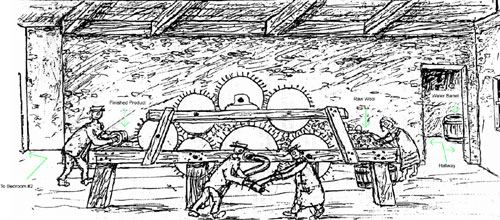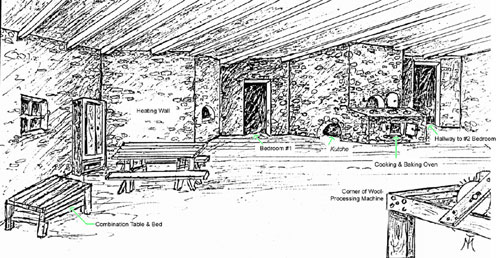 |
The wool-processing machine that dominated the Tenenbaum's living room. South Wall of Living Room Can you imagine this machine in our Living Room? [original page 21] |
 |
| Interior of our last rented house in Visoko, Litovsk [original page 31] |
| Editor's Notes: The memoir mentions that Morris and his family occupied two houses in Wysokie, but does not clearly distinguish them. The two interior views shown above may be of the same house or of different ones. For the sake of brevity, information about the two family homes has been combined. |